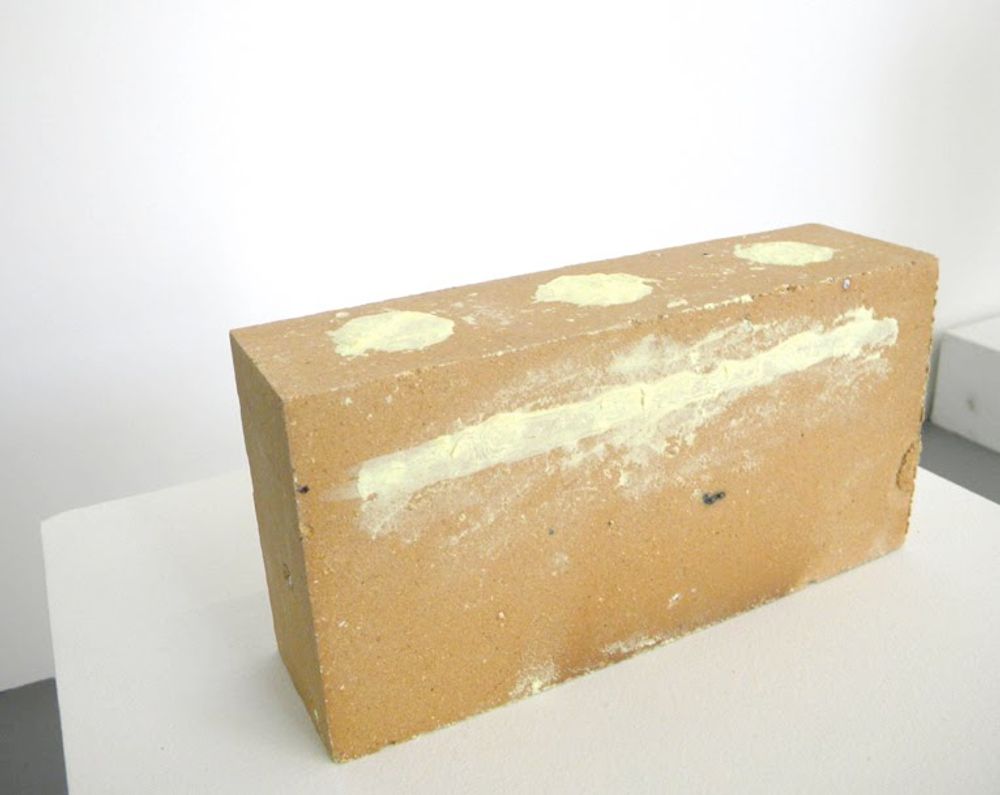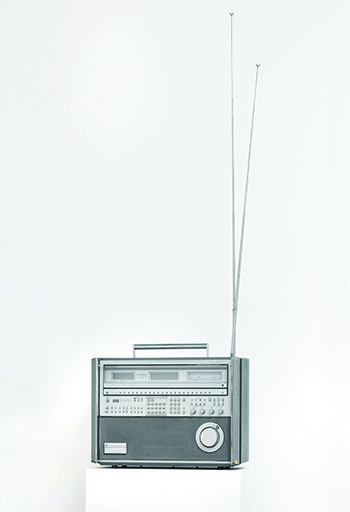
I’ve been fascinated for days by Tamás St. Turba’s Czechoslovakia Radio 1968 (1969) since Jeremy Millar posted about the project on bluesky. St. Turba, who has like five spelling variants and alternate names, is a Hungarian filmmaker, archivist, activist, and Fluxus artist who took Fluxus seriously enough to stop calling himself an artist or his projects art.
Czechoslovakia Radio 1968 is/was a conceptual artwork as protest against the Warsaw Pact military forces’ radio ban: a brick was painted to look like a transistor radio, which Czech residents pretended to listen to. This simple gesture was taken up as an act of defiance to the point that the military confiscated brick radios along with real ones.
St. Turba has made or remade the radios since, as needed, including for Documenta 13 in 2011, and one he remade in 2008 which found its way into Tate’s collection in 2016.
Here is a surviving early blog post about the Radio. And Socks-Studio has a basic post-Documenta account and image. But the most in-depth consideration I’ve found of Czechoslovakia Radio 1968 is An Active Encounter, a 2014 show in Belfast at PS2 (pronounced, alas, PS Squared), which pulled it from Documenta obscurity and gave its ideas of resistance and engagement and community resilience a real workout. Here is curator Ciara Hickey, in an essay/recap which is only available via the Internet Archive, curator Ciara Hickey:
In an early conversation between the artist and myself about the Czechoslovakia Radio 1968 piece the artist noted that the brick could be ‘used to build the courthouse or as a missile to smash it’. On this occasion it seemed the artist had opted to deconstruct or ‘smash’ the format of the project. In terms of a public event, I can only imagine the audience perception of the piece as something thin and uncomfortable. However, in addressing the trickster-ish and conspiratorial nature of Czechoslovakia Radio 1968 it playfully presented a series of disruptive and subversive strategies that resonated with the impulse of the original work.
At a time when resistance to authoritarian stifling of culture has never felt more urgent, it’s been maddening to see how fragmented or detached discussion of St. Turba’s project is. Partly that could be because he refutes it artwork status, but also because he’s busy trying to fill in the archival gaps from Cold War oppression while Hungary grapples anew with another fascist. But it feels like the art apparatus has been failing in its job.

It may also be because the art apparatus, as such, can’t really deal with non-valuable or non-auratic objects. Even/especially when they look and sound uncannily familiar.

I only realize now I don’t know the origin of Isa Genzken’s concrete World Receivers. She first showed a working world receiver as a readymade in 1982, which was then a context, if not a gesture, of reaching information within borders and beyond. I think the non-functional concrete simulacra only came later, and I don’t know how. But maybe it’s entirely unrelated.
Previously, somewhat related: Cash4YourGenzken
Au bout de La Nuit
